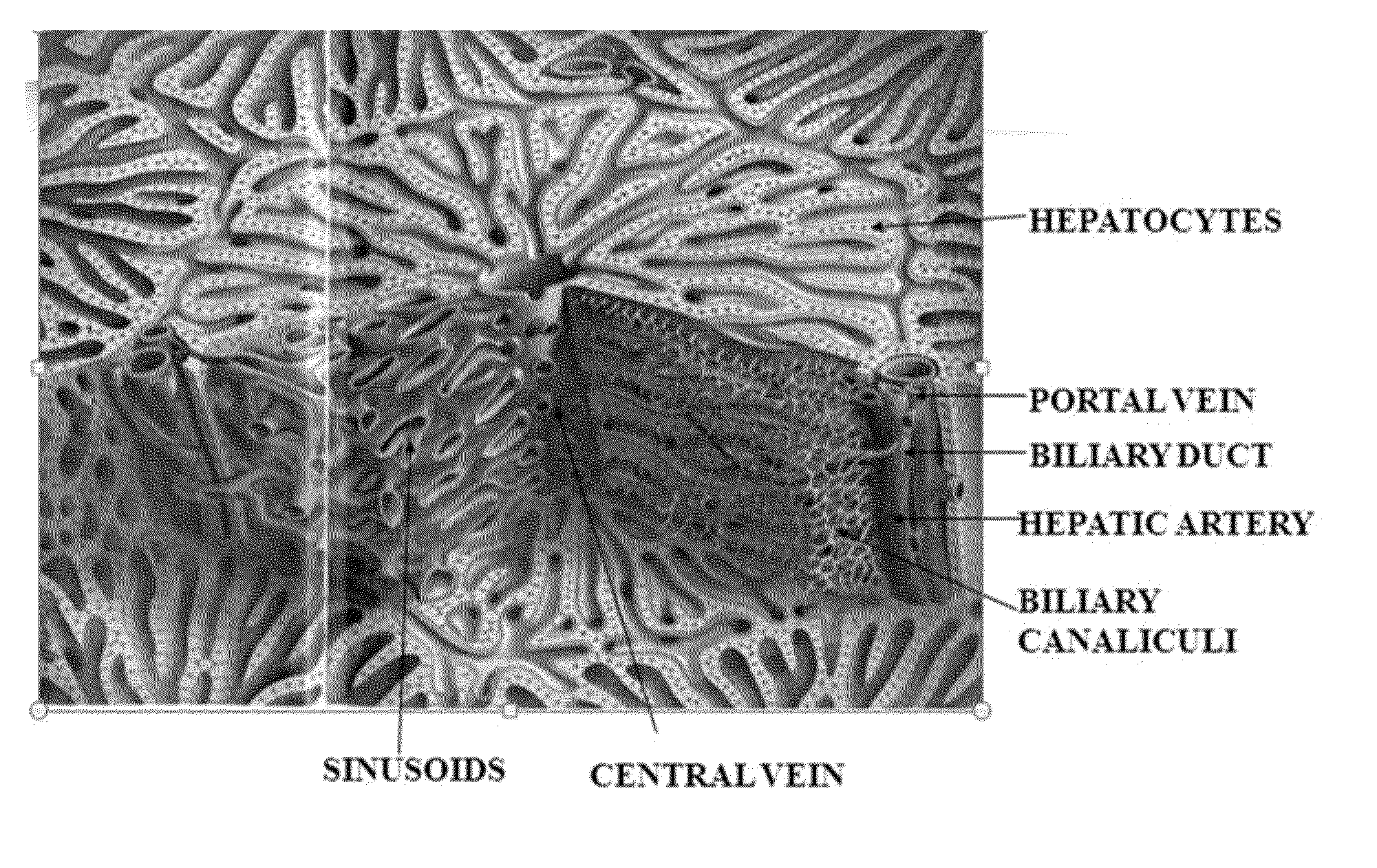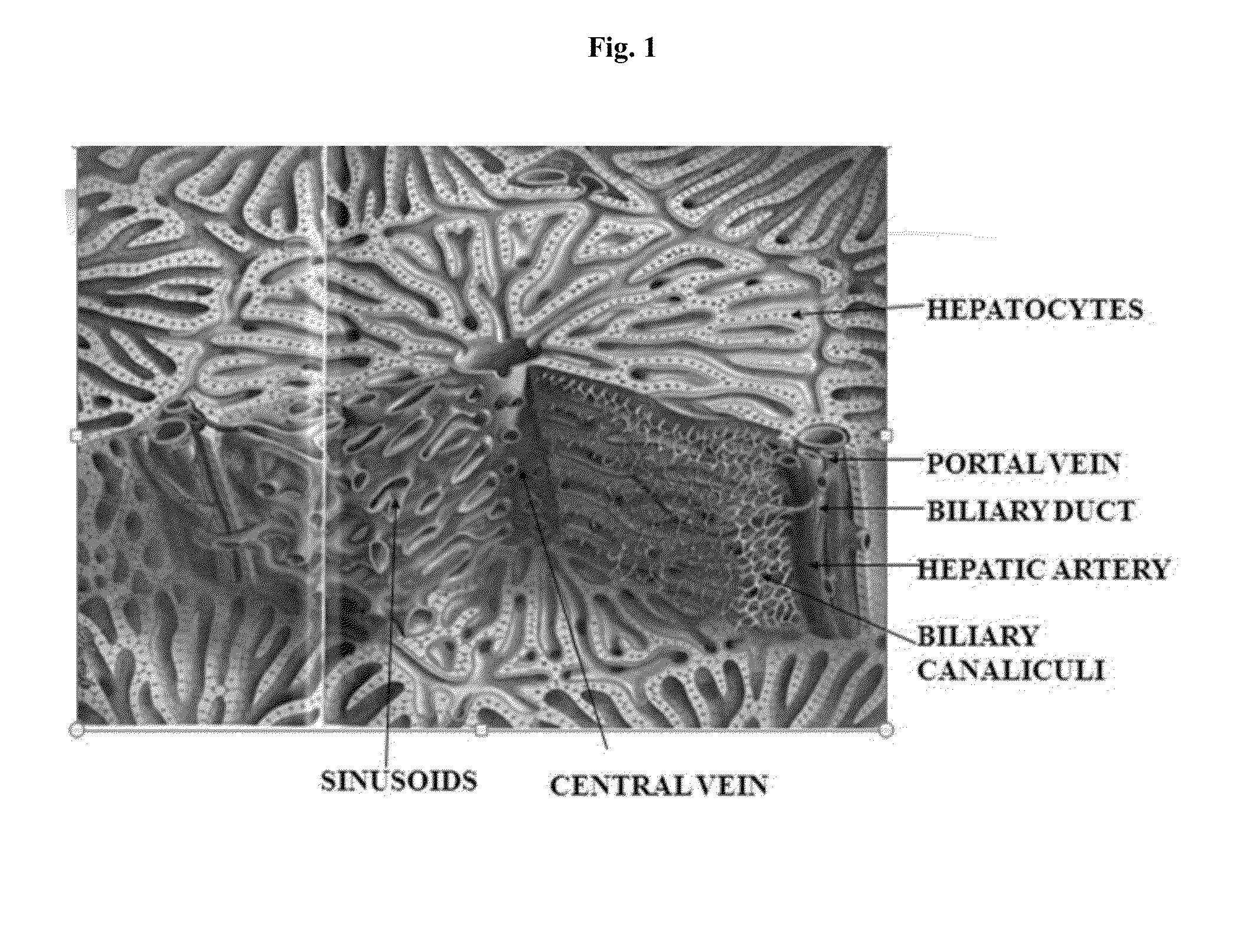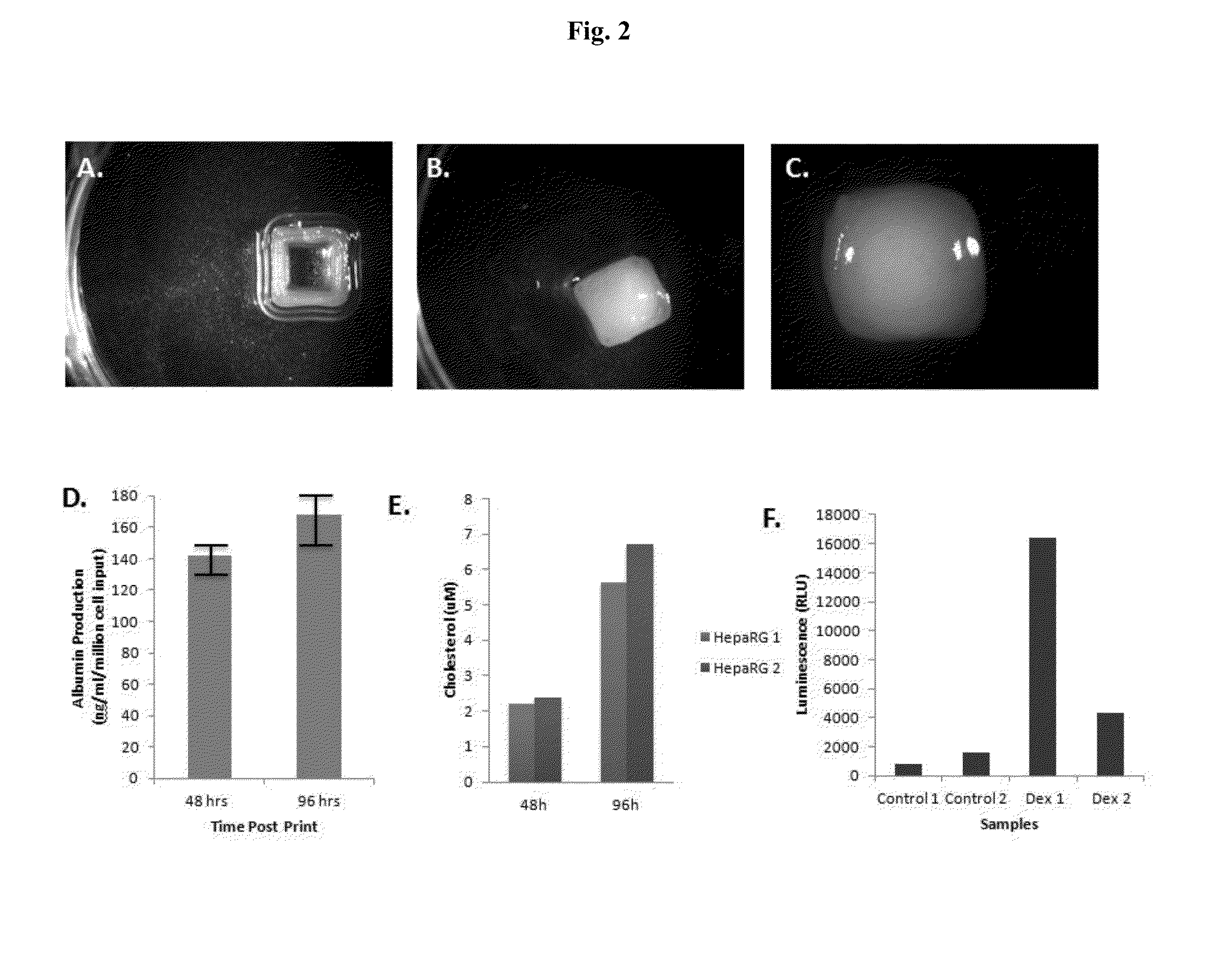Engineered liver tissues, arrays thereof, and methods of making the same
a technology of liver tissue and array, applied in the field of health care industry, can solve the problems of low rate of new therapeutic discovery, high cost of drug discovery, and long process, and achieve the effect of improving the suitability of cells
- Summary
- Abstract
- Description
- Claims
- Application Information
AI Technical Summary
Benefits of technology
Problems solved by technology
Method used
Image
Examples
example 1
Liver Tissue Bioprinted Using Continuous Deposition and Tessellated Functional Unit Structure
[0204]Engineered liver tissue was bioprinted utilizing a NovoGen MMX Bioprinter™ (Organovo, Inc., San Diego, Calif.) using a continuous deposition mechanism. The three-dimensional structure of the liver tissue was based on a repeating functional unit, in this case, a hexagon. The bio-ink was composed of hepatic stellate cells and endothelial cells encapsulated in an extrusion compound (surfactant polyol—PF-127).
[0205]Preparation of 30% PF-127
[0206]A 30% PF-127 solution (w / w) was made using PBS. PF-127 powder was mixed with chilled PBS using a magnetic stir plate maintained at 4° C. Complete dissolution occurred in approximately 48 hours.
[0207]Cell Preparation and Bioprinting
[0208]A cell suspension comprised of 82% stellate cells (SC) and 18% human aortic endothelial cells (HAEC) and human adult dermal fibroblasts (HDFa) was separated into 15 mL tubes in order to achieve three cell concentrat...
example 2
Forced Layering
[0213]Cell populations (homogeneous or heterogeneous) were prepared for bioprinting as either cylindrical bio-ink or as a cell suspension in Pluronic F-127 (Lutrol, BASF). Briefly, for preparation of bio-ink, cells were liberated from standard tissue culture plastic using either recombinant human trypsin (75 μg / mL, Roche) or 0.05% trypsin (Invitrogen). Following enzyme liberation, cells were washed, collected, counted and combined at desired ratios (i.e., 50:50 hepatic stellate cell (hSC):endothelial cell (EC)) and pelleted by centrifugation. Supernatant was then removed from the cell pellet and the cell mixture was aspirated into a glass microcapillary of desired diameter, typically 500 μm or 250 μm, internal diameter. This cylindrical cell preparation was then extruded into a mold, generated from non cell-adherent hydrogel material with channels for bio-ink maturation. The resulting bio-ink cylinders were then cultured in complete cell culture media for an empirical...
example 3
Multi-Well Plates
[0220]Cell populations (homogeneous or heterogeneous) were prepared for bioprinting using a variety of bio-ink formats, including cylindrical bio-ink aggregates, suspensions of cellular aggregates, or cell suspensions / pastes, optionally containing extrusion compounds. Briefly, for preparation of cylindrical bio-ink, cells were liberated from standard tissue culture plastic using either recombinant human trypsin (75 μg / mL, Roche) or 0.05% trypsin (Invitrogen). Following enzyme liberation, cells were washed, collected, counted, and combined at desired ratios (i.e., 50:50 hepatic stellate cell (hSC):endothelial cell (EC)) and pelleted by centrifugation. Supernatant was then removed from the cell pellet and the cell mixture was aspirated into a glass microcapillary of desired diameter, typically 500 μm or 250 μm, internal diameter. This cylindrical cell preparation was then extruded into a mold, generated from non cell-adherent hydrogel material with channels for bio-in...
PUM
| Property | Measurement | Unit |
|---|---|---|
| thickness | aaaaa | aaaaa |
| concentration | aaaaa | aaaaa |
| concentration | aaaaa | aaaaa |
Abstract
Description
Claims
Application Information
 Login to View More
Login to View More - R&D
- Intellectual Property
- Life Sciences
- Materials
- Tech Scout
- Unparalleled Data Quality
- Higher Quality Content
- 60% Fewer Hallucinations
Browse by: Latest US Patents, China's latest patents, Technical Efficacy Thesaurus, Application Domain, Technology Topic, Popular Technical Reports.
© 2025 PatSnap. All rights reserved.Legal|Privacy policy|Modern Slavery Act Transparency Statement|Sitemap|About US| Contact US: help@patsnap.com



